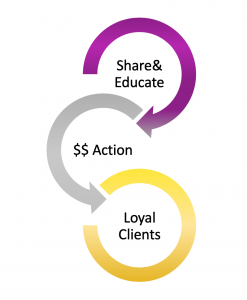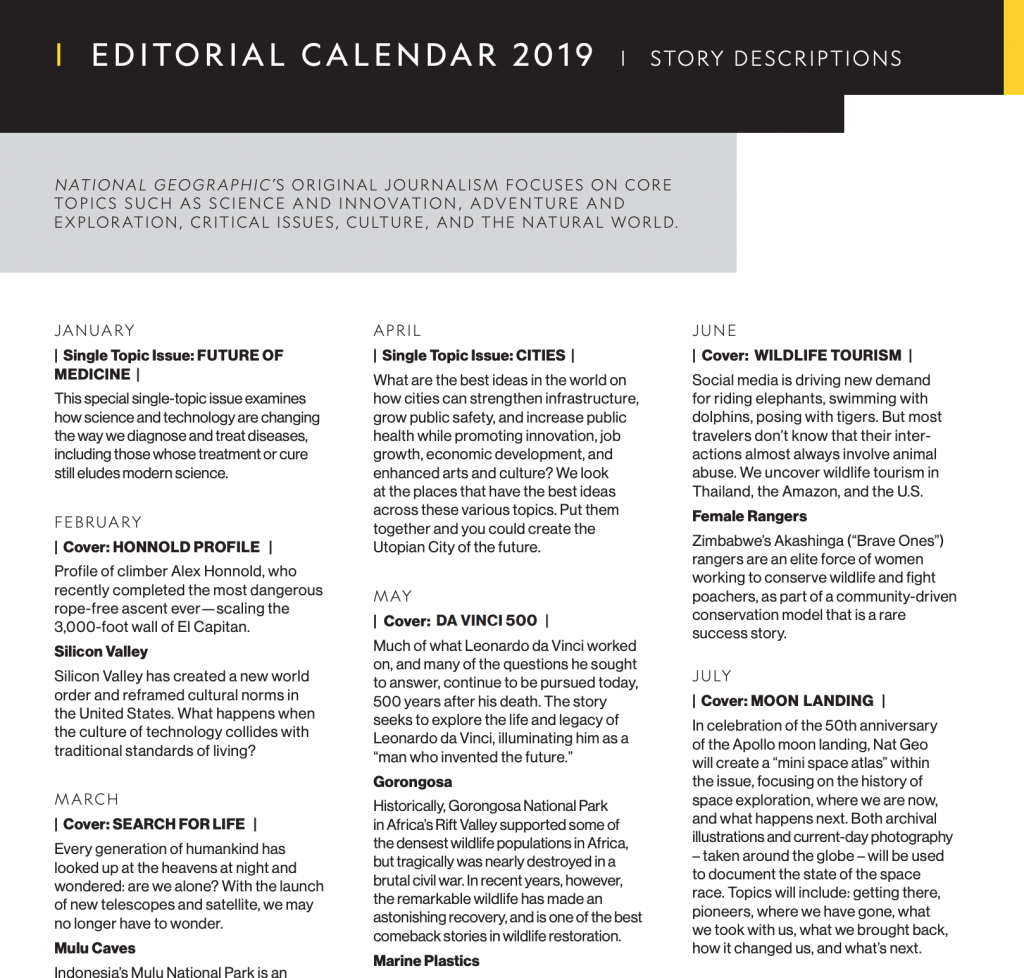Catch the Year in Review podcast episode releasing on 12/24/25!
How to grow your RIA with content marketing
Hey, it’s Kristin!
Kristin is the former founder of a niched RIA that she grew from zero to six figures of revenue in less than three years, completely from scratch. In 2014 Kristin transitioned full time into training and coaching, where she now helps independent financial advisors build Version 2.0 of their firm while living a fulfilled personal life along the way.
How do you get your ideal client to pay attention?
You want to grow your firm and generate more revenue. In an earlier article, I explain that the first strategy to make this happen is to attract more high value, hyper-targeted clients. Once you define who that client is, then how do you actually get them to notice you?
The short answer: you need to follow a marketing system. This system is driven by content: consistent, quality content shared from your brand platforms (through a blog, podcast, videos, and social media posts). Yet, too many advisors lack marketing prioritization and focus, resulting in stalled growth and frustration.
Scattered or one-off efforts do not help you grow your business. Lunch out with an estate planning attorney or running a facebook ad with no lead capture system in place —and expecting a stream of new clients—-will leave you underwhelmed. If you’ve written only handful of blog articles in the last year and failed to share them on social media, you may claim, “I tried that, it doesn’t work.” I wouldn’t expect it to.
The Rule of (at least) 7

According to one of the oldest rules of marketing, “the Rule of 7,” a prospective customer must be exposed to your message seven times before she or he will take action. With the overload of messages people see every day on digital platforms (as well as offline exposure), seven is likely a low number in the modern world.
Connecting with prospects today requires frequency, consistency, quality and patience more than ever before! You need to stay visible and be top of mind when your potential client’s trigger event occurs and they take action based on what they’ve noticed. This trust you have built up drives a revenue-generating action (e.g. consult request). The continuation of sharing content (through email, for example) will keep that person inspired as they move through the conversion process, and serve to deepen the relationship as they become loyal clients.
So, why content?
When you share content, you are able to engage with your ideal client in natural way across multiple outlets as you proactively tell the story you want your audience to hear. You generate awareness and create interest as you:
- Educate – teach concepts that are relevant to them
- Editorialize — share your opinion on topics that matter to them
- Inspire — encourage them to take action in their lives
- Entertain — have some fun!
Address what matters to your audience
All of the content you share should reinforce the brand personality you want to portray and the values you uphold at your firm. Most importantly, however, the ONLY person you speak to with your content is your high value hyper target client. You must address what matters to them.
When I had my RIA focused on new parents, one of the biggest desires I heard my clients crave was taking a ‘real vacation.’ Since many people are transplants here in the Bay Area, they spend much of their vacation time visiting relatives. They also carried guilt around spending money on vacation knowing they had many other areas (down payment, college funding, retirement) where they wanted to save and invest. This prevailing mindset inspired content on how to plan for and take an affordable and enjoyable trip.
EXAMPLE: San Francisco New Parents
What’s on their mind?
- Aspiration: When can we take a real vacation and not just a trip to see family?
- Worry: Can we afford to take a vacation?
Content outcome: Vacation without Guilt: 10 Steps to Prepare for a Trip You Can Afford and Enjoy
This content can be leveraged in multiple ways:
- As a blog post
- On a podcast
- In a video
- As part of the written financial plan
- As 10 different social media posts delivered across Instagram, LinkedIn, twitter, facebook, and/or pinterest (That’s 50 posts if your audience and you are on all 5!).
- As a guest contribution on another’s blog
- In your newsletter as a feature article
- As part of a webinar or workshop you host
- As a lead magnet to grow your list
(and this list goes on…)
Develop the content calendar that best appeals to your audience
The key to content sharing as a marketing strategy is to decide your narrative in advance. How does the story you want your potential customers and your clients to hear unfold? Once you’ve worked this out, you can draft your content calendar. This outline of topics – ideally for a full year — guides the content you share. How you “group” content often depends upon how you deliver your service.

Magazines (now mostly online, of course) map out their content themes for up to a year and share this information in their media kits. As you can see in the examples on the right, Real Simple reveals their edit calendar 6 months at a time. National Geographic shares the issues and cover stories for the whole year.
This method helps magazines pre-sell ads to advertisers by showcasing the relevance of the content theme for the month. You can do the same thing. While you do not have to know exactly what you will share each month, you can assign topic(s) to each month.
You may choose to balance technical themes (e.g. retirement income) with softer lifestyle or behavior ideas (e.g. how to have money conversations with your spouse). You may follow the steps of your financial planning process, drawing in relevant content topics as you work through the year. You could choose to answer a series of your frequent questions your audience asks, spreading them out across 6-12 months. Or maybe it is a combination of a few of these.
But how much content and where does it come from?

Once you craft the calendar, decide which sharing platform(s) you will use and how often you want to share so you can accurately map out the amount and types of content you need. Choose what you are going to create yourself; if you have more than one contributor on your team, then assign topics by name. At least half of your content should come from directly from your brand as your crafted message. (How you create content will be the feature of a separate blog post). You may also curate a portion, collecting the best content you find and sharing it. Finally, you can team up with other professionals and feature guest contributions or interviews. This collaboration strategy works well to fill gaps outside of your expertise and expand your reach (more on that in a later post, too).
Everyone in your brand sphere benefits from content
When you implement a content sharing initiative as one of your key marketing strategies, you have the opportunity to begin, build and deepen the relationships with anyone who experiences your brand. This means you can move people who have never heard of you to re-engage, inspire prospects to take the next step, motivate clients to stay on track or inspire them to refer their friends. Your employees and your vendors benefit, too. They continue to hear and see what you believe, what matters to your brand, and how and who you help.
Imagine how much impact you can have when you reach people who will benefit from your content with every piece you publish. Approach your efforts with this mindset and you will no longer have to seek motivation to produce and share content.
Hey, it’s Kristin!
Kristin is a CERTIFIED FINANCIAL PLANNER™ professional. Managing her own firm, she grew it from zero to six figures in less than three years, completely from scratch. In 2014 Kristin transitioned full time into training and coaching, where she now helps independent financial advisors to grow their firms.
Find fulfillment faster!
Get the latest tips, articles, podcast episodes and more
from Full Advisor coaching. Sign up for our mailing list today.
Full Advisor Coaching | Designed by Blush Cactus
©2025 Broderick Street Partners, LLC DBA Full Advisor Coaching
